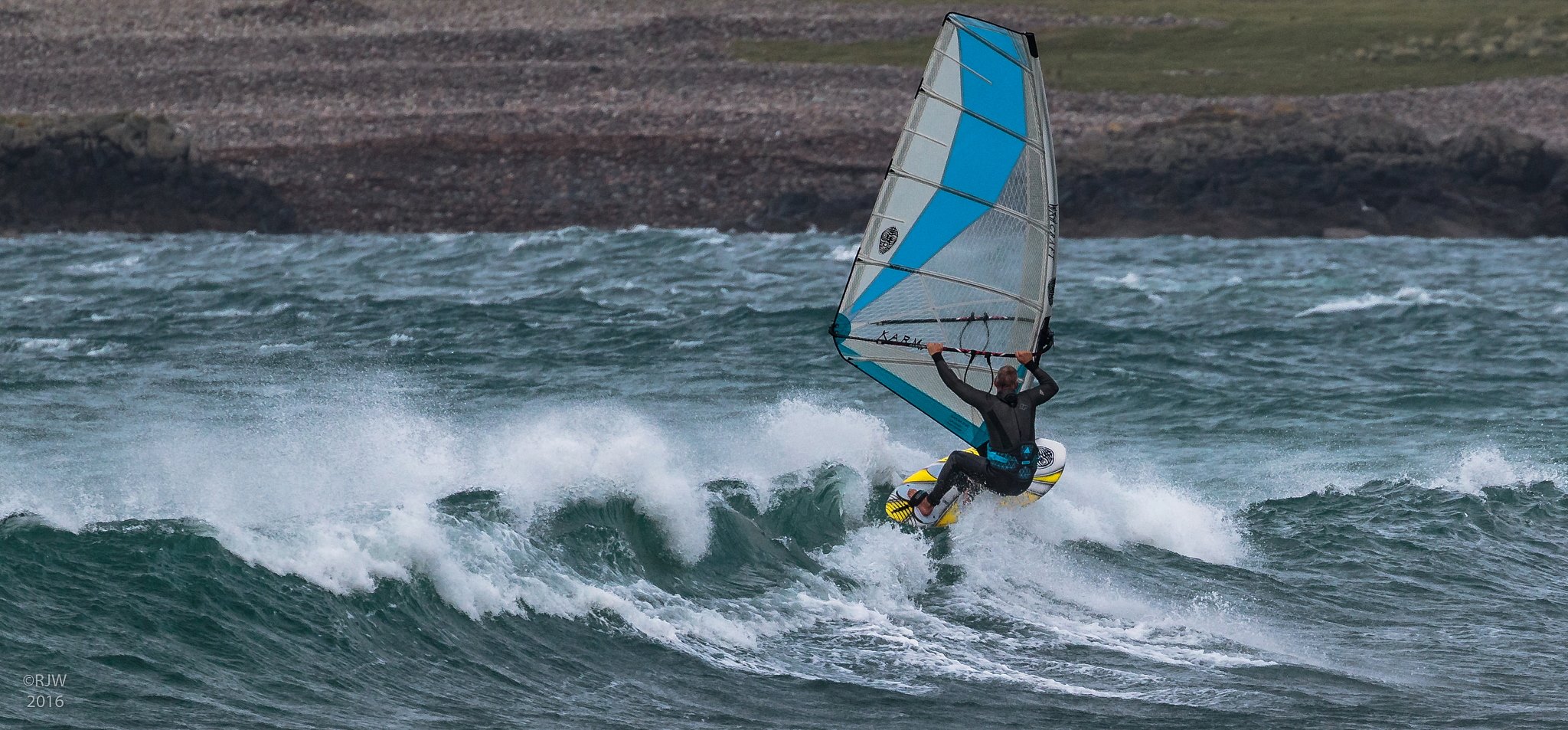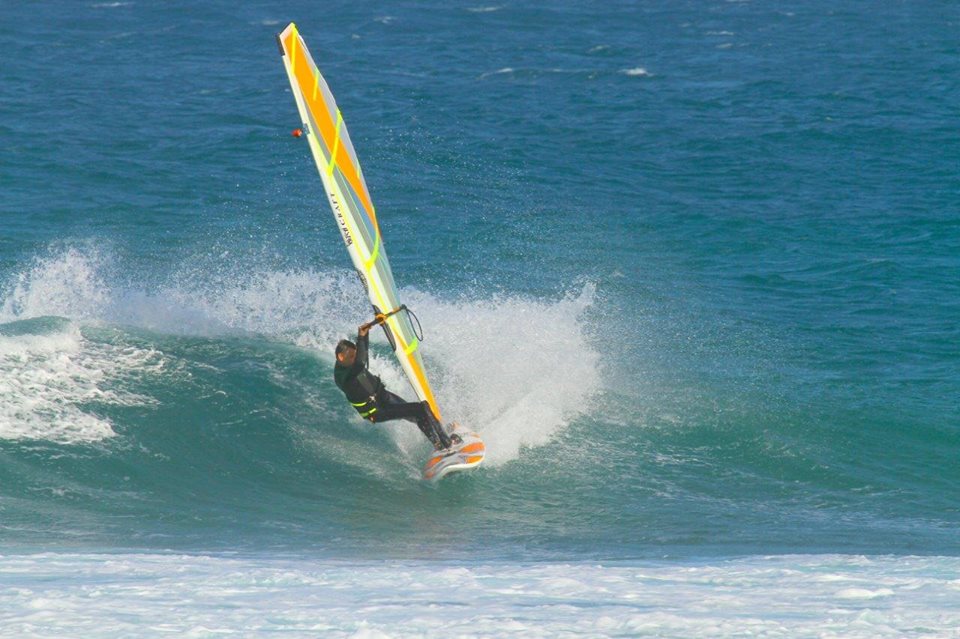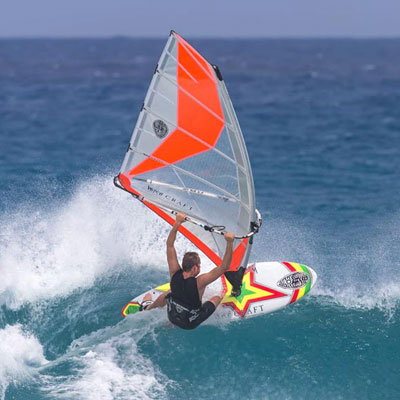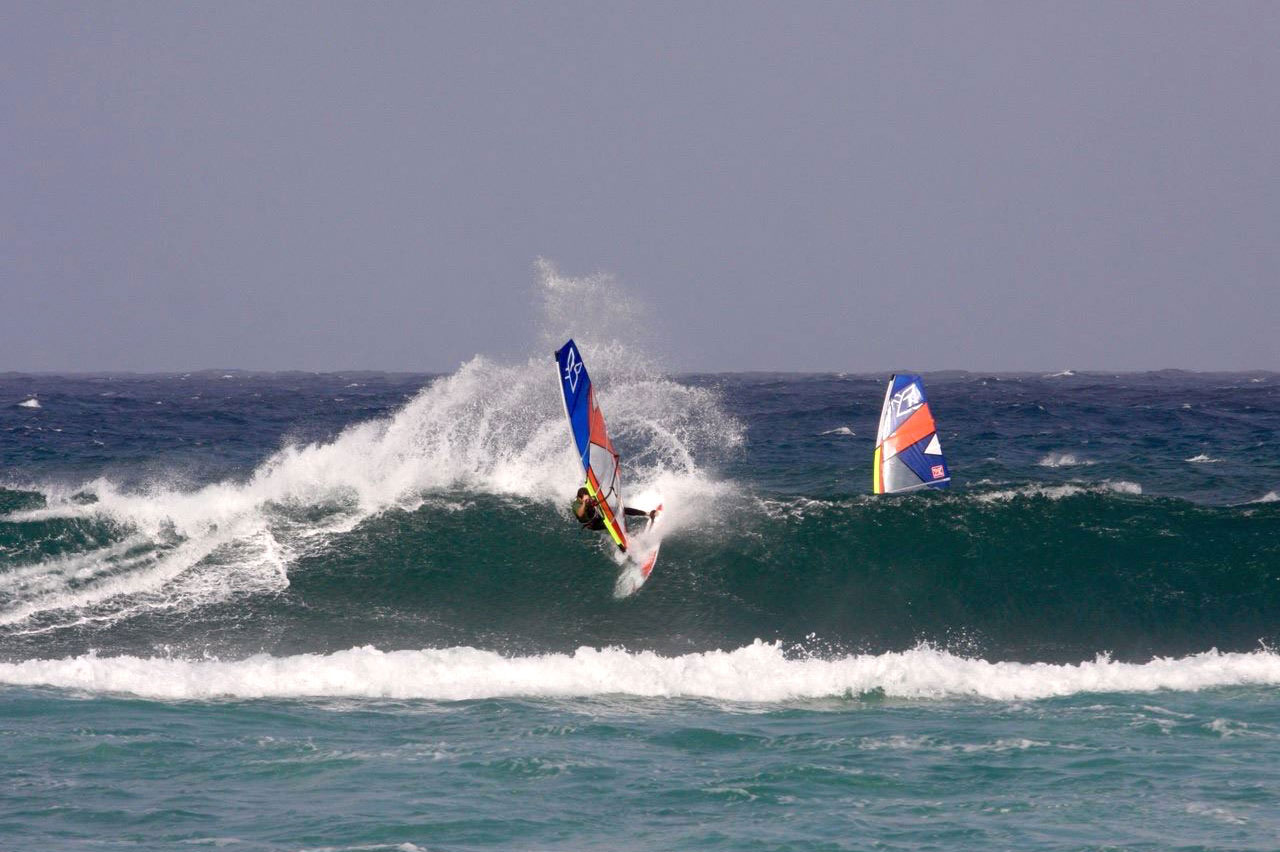As we head into autumn proper in the northern hemisphere it’s a time that traditionally signals waves and wind. For experienced windsurfers it’s the best time of year. If, however, you’re still contemplating the wave arena and making the leap then consider these pitfalls.
Going out in too light a wind
Gazing on in awe at glassy waves with pros/experts doing their thing it’s understandable you may want a slice of this groomed perfection yourself. After all, sailing in idyllic conditions is simply dreamy.
To achieve this type of scenario, however, you can pretty much guarantee that wind conditions are on the lighter side. There are other factors (see below point) but generally true glassy waves occur with lighter airs. As such it’s a skill that requires you to steadily build up practice to be able to ride in such situations. Light wind sailing is lots easier at point breaks with a flat water channel downwind such as Fuerte has. Beach breaks can be hard when looking to develop this skill.
Choosing offshore winds
As with the above the wind’s angle plays a key part in pure wave sailing scenarios. Not only will the breeze be on the lighter side it’ll probably be side offshore. Depending how offshore will dictate how ‘surf’ like the break looks.
It’s not really possible to wave sail in bang offshore winds, just a little off shore is ideal, the more offshore the more difficult it gets. The more offshore, the gustier it gets, by the land but also by the waves, shooting the wind up in the air. The bigger the waves, the bigger this effect. Getting over white water at beach breaks is also easiest when heading square towards the wave so offshore winds also make this more difficult with the need of pointing downwind with each wall of white water to conquer and the risk of getting pulled over the front.
When sailing point breaks in light wind, a bit of offshore is actually desirable. The wave gathers and accelerates the wind on its face and the waves stay nice and clean. This is the easiest and most rewarding wave riding you can find. When sailing out through the channel the wind is still gusty but, without having to get over waves, far less of a problem. If you have some reasonable light wind float skills and dream of some clean float and ride wave riding (or surf sailing as the French call it), Fuerte in winter is the place to be with over 10 different point breaks to choose from.
Surfing vs. surf sailing
Some may think: if it’s light I may as well go surfing, though surf sailing or float ‘n’ ride wave riding has various advantages:
-Less problems with crowds and rights of way. You can pick up a free wave on the outside and usually it is clear who has the wave before it starts shaping therefore avoiding aggression like in crowded surf spots
-You can pick up lots more waves
-You can position yourself better before the wave starts breaking
-You can get around broken sections easier
-With the straps you can push harder and make aerials easier.
-Less problems with rips
Choosing waves that are too big/powerful
Wave sailing doesn’t have to mean the biggest and hollowest bombs you can find. It’s OK, and actually better in the short term, to start with smaller less powerful swells. This way riders can hone their skills without risk of injury or kit breakages.
Likewise smaller, yet powerful throwing surf is probably best avoided to start with as well. There are countless breaks around the world where a couple of foot’s worth of surf can unload in detonating fashion due to shallow seabeds. Whilst this is great fun for those seeking aerial sections, for instance, it’s probably not great for learning the ropes.
Floatier boards help
There are lots of factors to be considered when looking to get involved with wave sailing, not least the amount of water moving about. It stands to reason that wave energy rushing towards shore needs to escape back out to sea resulting in current. Add to the mix that wave energy heading towards you in the form of unbroken swell and/or white water and you can start to appreciate the situation.
These days wave boards don’t need to be on the small, low volume side. Design has come a long way meaning a floatier board can be used in situations where you’d previously be on smaller stick. This is great as it gives riders a helping hand when negotiating waves and getting out back. It helps when picking up waves and is an added safety net for if the wind drops. Nowadays bigger wave boards turn as good and have better grip and control than older smaller wave boards. Witchcraft’s Wave V4, which is designed for wave riding, had good planing and upwind ability combined with excellent drive and grip on the wave unlike any other shape. Having a well designed fin set up that provides good turning with grip, predictability, upwind performance and low drag is beneficial. Our trifin system with asymmetric pretwisted side fins is unmatched in ticking all these boxes.
Powerful sails help
Like with floatier boards, powerful sails help to get where you want to go. To get out of the wrong spot and into the right spot. Only once you are on the wave is when a depowering sail is beneficial. Good wave sails such as our Slayer or Karma have both traits.
Strong gear helps
There’s nothing more annoying than having to stop sailing because of broken gear. Apart from the obvious costs and effort needing to be made to go sailing the next time.
Dynamic actions
Wave sailing isn’t like blasting back and forth. You’ll be required to be more mobile and proactive on your gear. You may be required to sail unhooked and possibly out of the foot straps. At other times you could end up being fully committed. And then when you eventually pick up a wave standing stock still won’t yield the best results. When you go down the line on a wave you bear off and you will have less wind in your sail or even have the apparent wind against you. This is why experienced riders will lay the sail flat to cut through the apparent wind. Often you see newbies making the mistake of going DTL too soon without the power of the wave and falling off the plane to then be drilled. Wait longer to use the momentum of the wave to keep speed and out run the wave.
Laying the rig over during bottom turns, engaging the board’s rail, moving hands up and down the boom (surfing the boom as it’s commonly referred to) and all manner of twists and bodily contortions are par the for the course during a wave ride and wave sailing in general. Ultimately being more dynamic is what’s needed to be a successful surf rider.
When a breaking wave is about to hit, try to hit it with the nose of your board, a wave has far less surface to hit on the nose than from the side. Even punching through the lip may be the best way out.
Stop when you are getting tired. When you are tired you are far more likely to get into trouble which could even result into broken or lost gear or a rescue operation.
Watch wave riding videos in slow motion and look exactly what the rider is doing. Having someone film you is the best way to improve. It still happens dodging a lip only to see later via video it was perfect to hit.
If you’re looking to step up into waves this season then choosing an easy going break is the best course of action. You’ll definitely have the fundamentals of windsurfing nailed down beforehand. It’s then a case of building incremental experience over time – rushing things isn’t the best way to achieve your goals.
What advice would you give to aspiring wave sailors?








